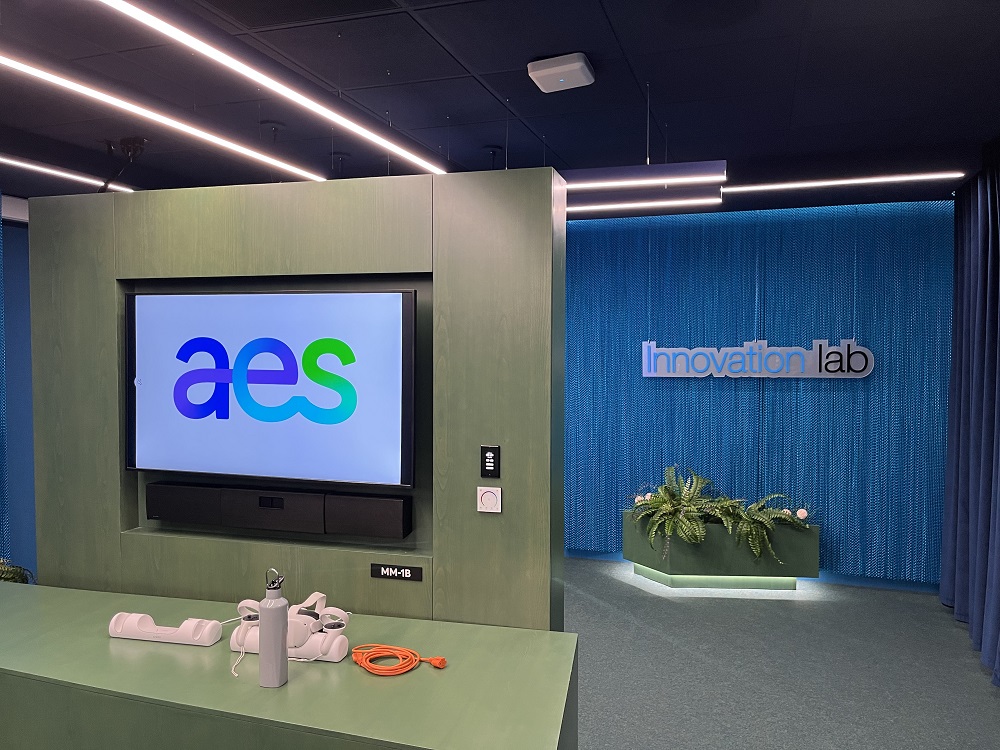The AES Corporation is based in Arlington, Virginia and has “40 years of expertise in the development, operation and innovation of energy solutions.” The AES Corporation owns 49.1% of AES Panama with the Panamanian State owning 50.4% and minority shareholders owning the last 0.5%. This ownership by the Panamanian State is because they recognize the importance of the energy sector and wanted to maintain a stake in the company despite the privatization.

We had the opportunity to visit the AES Panama Headquarters and speak with Edgar Ivankovich, the Communications and Stakeholder Management Director for AES Panama. Edgar spoke with us about the history and current state of AES Panama as well as what the future looks like for AES Panama and energy in Panama. It was clear from his presentation that AES believes in “accelerating the future of energy together.”
AES Panama started in 1999 when the Panamanian government began privatizing the energy sector. The original hydroelectric locations were la Estrella, los Valles, and Bayano. AES Panama then completed the Estí location in 2003. The Changuinola location was next and is the only hydroelectric facility on the Atlantic side.
Aside from hydroelectric power, AES Panama uses wind and solar forms of renewable energy. AES Panama has multiple solar locations including the Pesé Solar location, the Mayorca Solar location, and the Caobo & Cedro Solar parks. Along with these locations, AES Panama also has the Costa Norte Solar location. The Costa Norte Solar location is unique because it uses a new method of installing solar panels where the panels are unfolded in a prewired and preassembled structure. These solar panels are 10-15% more expensive than the traditional solar panels but saves space and manpower. By saving space with these new solar panels, the land use is more optimal and the necessary amount of land is reduced. The cost savings from reduced manpower with these unique solar panels can also add to their cost effectiveness.
Alongside the renewable energy sector, AES Panama is involved in providing energy from liquid natural gas. Liquid natural gas is a cleaner fossil fuel than coal and diesel. The process for supplying liquid natural gas begins with freezing the natural gas to a temperature of -162 degrees Celsius converting the gas to a liquid form. This liquid is transported through pipes, trucks, or ships to the plant. Here, the gas is stored in insulated tanks to keep the gas in its liquid phase. When needed, the freezing condition is reversed through heating, then the natural gas is burned in its gas phase to provide energy.
In total, AES Panama has invested $2.75 million in energy solutions. With almost 70% of their portfolio being renewable energy, AES Panama is committed to providing clean energy to Panama.
A notable part of the tour of the office was the Performance Monitoring & Analytics Center (PMAC) and is shown below. The PMAC at the Panama office is where the performance of all the Central American locations is monitored. All the operations in these countries can be checked in this room to observe performance. With this data, they can perform analysis and decide the backup and maintenance plans as necessary.

Along with the PMAC, we also had the opportunity to visit the Innovation Lab which is shown below. The Innovation Lab was a unique working space with the goal of invoking creativity and innovation in the workers. Everything in the room could be moved and reconfigured to meet the needs of those working in it. There were screens, VR headsets, and tables available for workers needing to use the space. An interesting feature was the lack of windows which allowed time to flow without being noticed. We were told that meetings and presentations take place in the space to provide a collaborative environment.

Outside of providing energy solutions to Panama, AES Panama also participates in many community programs and initiatives through the AES Panama Foundation. One community program was the Education: Leader in me program which is a program with the goal of strengthening soft skills for students at the Nance de Risco school. Another program was the Passport to Success vocational training program aimed to help students from the Abel Bravo School in Colón to strengthen their socioemotional skills for life and work. AES Panama’s community outreach has received recognition for its involvement in many programs including the award pictures below.

The visit to the AES Panama Headquarters provided us with a lot of information on renewable energy, clean energy, and the energy situation in Panama, while also allowing us to see how a large corporation functions behind the scenes. The visit was an all around interesting and informative experience.
Blog by Samuel Hoffman
